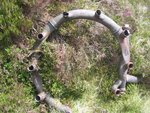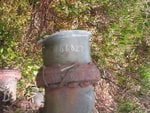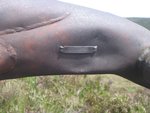Hi all,
Came across an old machine part while walking in the hills in Ireland.
Not sure what it is.
Possibly an old aircraft part? Seemed to be made of quite light and well worked metal for a piece of farm/forestry machinery.
Was high up in the hills, and very well entrenched in the ground, like it had been there for some time.
Could be barking completely up the wrong tree though...
Any clues on what it might be?
Thanks!
Came across an old machine part while walking in the hills in Ireland.
Not sure what it is.
Possibly an old aircraft part? Seemed to be made of quite light and well worked metal for a piece of farm/forestry machinery.
Was high up in the hills, and very well entrenched in the ground, like it had been there for some time.
Could be barking completely up the wrong tree though...
Any clues on what it might be?
Thanks!



